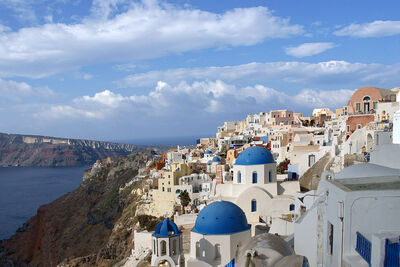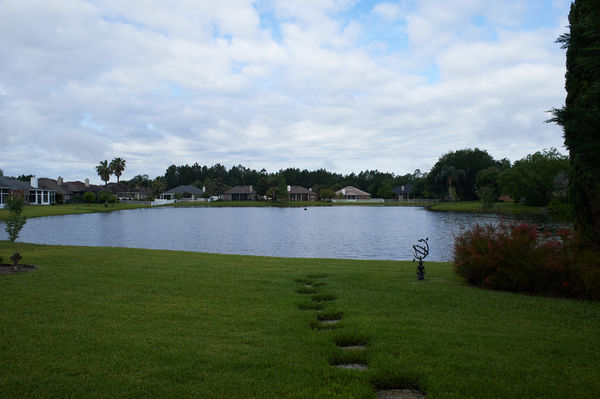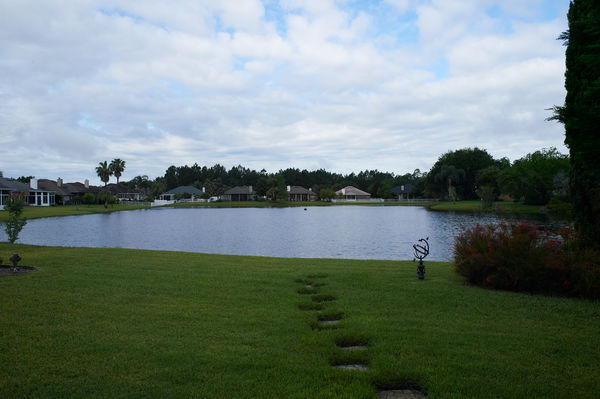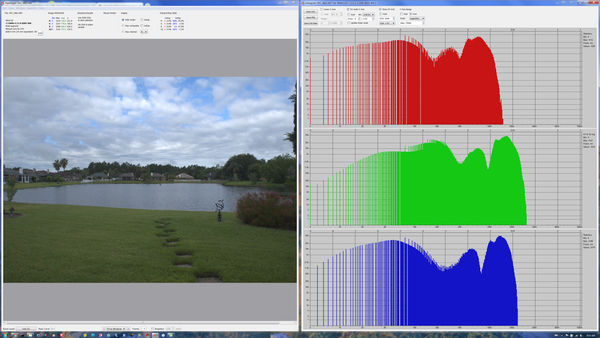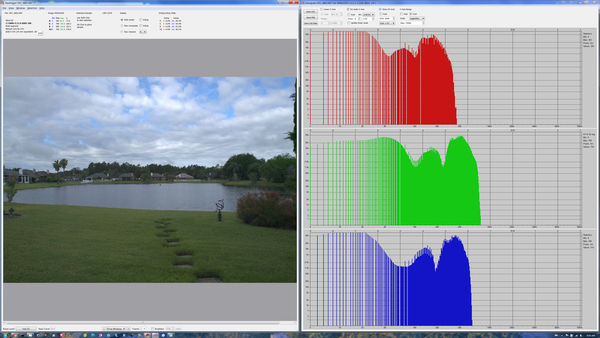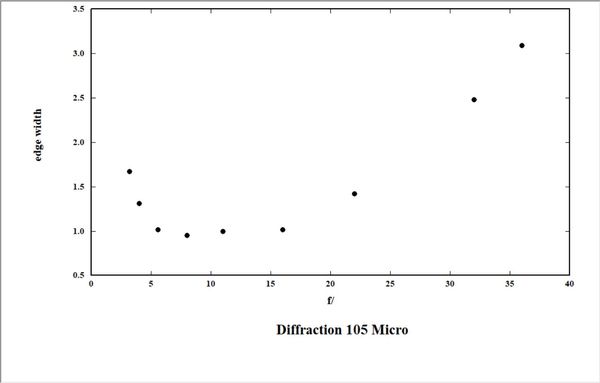Does ISO Affect Landscape Image Quality
Apr 30, 2020 08:18:27 #
RichardTaylor wrote:
From personal experience it will also be very much dependent on the camera you are using.
I agree. Some of the older cameras were pretty well limited to ISO's of 400, or less. I've seen pictures shot at ISO 12,000+ on newer cameras that look as good as my older equipment shot at ISO 400. I know my limitations and can usually work around them either in camera or in post.
Apr 30, 2020 08:20:44 #
John Sh
Loc: Toronto, Australia
selmslie wrote:
That would be an entirely different test. The change in DOF would totally change the comparison.
I agree that the images would look different due to the changed DOF but they would also look different due to the increased noise. Read any article you like, including your camera manual and see what they say about high ISO and noise, colour rendition etc. I repeat that 6400 ISO is not high. Try 24000 and see what happens.
Apr 30, 2020 08:46:50 #
John Sh wrote:
I agree that the images would look different due to the changed DOF but they would also look different due to the increased noise. Read any article you like, including your camera manual and see what they say about high ISO and noise, colour rendition etc. I repeat that 6400 ISO is not high. Try 24000 and see what happens.
The reason I picked the same aperture (until I reached 6400) was so that any difference in rendition could not be attributed to a change in DOF or diffraction. I used a 28mm prime lens (typo in the original post) for the same reason. At that ISO my shutter speed was maxed out and my aperture had only one stop left, f/22.
I am well aware of the cause of noise. It’s insufficient exposure, not the ISO setting. But using a high ISO leads to a reduction in exposure and a lower S/N ratio and that’s why we can see the noise in the darker parts of the image.
For daytime landscape ISO 6400 is about as high as you can go without resorting to an ND filter.
Apr 30, 2020 08:56:12 #
Ysarex
Loc: St. Louis
selmslie wrote:
The point is that with most cameras as you increase ISO you lose sensor dynamic range. If the scene is very high DR then your ability to capture that will be compromised if you lose 1/2 the DR capacity of your camera's sensor.
Joe
Apr 30, 2020 09:01:19 #
NCMtnMan
Loc: N. Fork New River, Ashe Co., NC
I still relate DSLR ISO back to my film days with differing film speeds. Lower film speeds were generally finer emulsion and would give you finer grain in the negative. You shot them with lower shutter speeds and/or more light to give the film more opportunity to absorb the light. Am I correct to take the position that lower ISO on a DSLR will allow the sensor to collect more data for the shot, and allowing for more adjustment of the RAW file during post processing?
Apr 30, 2020 09:11:26 #
Ysarex wrote:
The point is that with most cameras as you increase ISO you lose sensor dynamic range. If the scene is very high DR then your ability to capture that will be compromised if you lose 1/2 the DR capacity of your camera's sensor.
Joe
Joe
That's not quite the right way to phrase it.
The sensor itself has a base ISO where you can use the sensor's entire dynamic range.
Increasing the ISO does not change the sensor's DR. But it makes it possible for the camera to record a lower signal.
For example, at ISO 400 you can use 1/4 as much exposure and get an image that looks the same as a normal exposure at ISO 100.
To get that lower signal to look like the image that you could get at base ISO you have to amplify it. When you do that you also amplify the noise, in other words, the noise gets easier to see because the S/N ratio is lower.
But all together the effect is the same. A higher ISO leads to images with lower S/N ratios and more visible noise.
Apr 30, 2020 09:16:31 #
NCMtnMan wrote:
.... Am I correct to take the position that lower ISO on a DSLR will allow the sensor to collect more data for the shot, and allowing for more adjustment of the RAW file during post processing?
That's correct.
But in most cases you will be hard pressed to see a difference if there is plenty of light on the scene and you don't go too high with the ISO. That's the point I set out to show.
Apr 30, 2020 09:19:18 #
Ysarex
Loc: St. Louis
NCMtnMan wrote:
I still relate DSLR ISO back to my film days with differing film speeds. Lower film speeds were generally finer emulsion and would give you finer grain in the negative. You shot them with lower shutter speeds and/or more light to give the film more opportunity to absorb the light. Am I correct to take the position that lower ISO on a DSLR will allow the sensor to collect more data for the shot, and allowing for more adjustment of the RAW file during post processing?
Basically yes but we have to be careful about making blanket or universal claims concerning digital camera ISO. In most digital cameras the common method of implementing ISO increases is to apply gain to the analog sensor output. This results in physically truncating the sensor's dynamic range capacity. In most cameras the relationship is fairly straightforward over most of the camera's ISO range. Here's a graph from Bill Claff's site showing DR loss over ISO for three different cameras.
https://www.photonstophotos.net/Charts/PDR.htm#Canon%20PowerShot%20G7%20X%20Mark%20II,FujiFilm%20GFX%2050S,Nikon%20D5600
The Canon and Nikon are straightforward but the Fuji get's strange at high ISO values -- Fuji implements those high ISO instead in the image processor.
But yes, you've got a good rule of thumb there; most digital cameras lose DR recording capacity over ISO increase.
Joe
Apr 30, 2020 09:22:32 #
Ysarex
Loc: St. Louis
selmslie wrote:
That's correct.
But in most cases you will be hard pressed to see a difference if there is plenty of light on the scene and you don't go too high with the ISO. That's the point I set out to show.
But in most cases you will be hard pressed to see a difference if there is plenty of light on the scene and you don't go too high with the ISO. That's the point I set out to show.
I thought your point was: "Does ISO Affect Landscape Image Quality? Apparently not."
Joe
Apr 30, 2020 09:24:54 #
I've found much the same with my D750. The Df could very well be one of the best dynamic range cameras out there, comparable to the D3s.
Apr 30, 2020 09:33:58 #
Yes, but only in extremes, because it affects other things like aperture and shutter speed. Let's say you are shooting a landscape whose ideal exposure would be F8 at 1/200 at ISO 200. Change the ISO to 400 and you will have to use a faster shutter or a smaller aperture. Change it to 3200 and you will have to use a very small aperture, which may cause diffraction fuzziness, or a very fast shutter speed. But unless you are shooting in extreme lighting conditions the changes should not be of any significance.
Apr 30, 2020 09:37:59 #
Ysarex wrote:
I thought your point was: "Does ISO Affect Landscape Image Quality? Apparently not."
Joe
Joe
You are quoting that out of context.
In the same post I said, "There may be a slight difference in the way that the shadows are rendered but that is easily adjusted with post processing. There may also be a little more noise as the ISO increases. But try to find it. You will need to look really close at more than 100%."
Apr 30, 2020 09:55:10 #
selmslie wrote:
... I am well aware of the cause of noise. It’s insufficient exposure, not the ISO setting. ....
Here are two images shot using the same exposure, 1/1000 @ f/11. Both images are actually underexposed. I adjusted them in Capture One by moving the Exposure slider to the right. No other adjustments.
Apr 30, 2020 10:05:10 #
selmslie wrote:
Here are two images shot using the same exposure ....
And here are the RawDigger histograms. The jagged left ends of the histograms tell us that the deepest shadows should be different.
But look closely at the deepest shadows of two images in the previous post. Are they different? How far did you need to go? Beyond 100%?
Apr 30, 2020 10:07:41 #
selmslie wrote:
(talking about loss of detail) Some of that is diffraction because the ISO 6400 image is at f/16, beyond the diffraction limit of f/11.
I took a quick look at diffraction and its effects on sharpness. https://www.uglyhedgehog.com/t-641034-5.html#11121069
The results showed that between f/8 and f/16 there was not much difference. Beyond f/16 the sharpness started to fall off (increased edge width in the graph below). This was done quickly and I plan to redo it with more data so I can put error bars on the points. When I get a round tooit.
selmslie wrote:
There is no question that at ISO 100 the sensor is receiving 64x as much light as at ISO 6400. That means that the S/N ratio is 64x higher.
Noise goes as the square root of the signal, so the S/N ratio is 8x higher.
selmslie (different post) wrote:
I am well aware of the cause of noise. It’s insufficient exposure, not the ISO setting. But using a high ISO leads to a reduction in exposure and a lower S/N ratio and that’s why we can see the noise in the darker parts of the image.
Right. Noise goes as the square root of the signal, so the S/N ratio will increase as the signal decreases.
-----------------------------------------------------------
Most of this is an argument about the technical aspects of the photograph. As far as the title is concerned, "Does ISO Affect Landscape Image Quality"(?) the answer is yes because increased ISO leads to increased noise. The different question "Does ISO Affect Landscape Image Value?" is dependent on two things: (1) the amount of important detail in the image that any viewer would want to look at up close; and (2) how far you push the camera in using high ISO levels. At some point the noise will detract from the artistic value of the image, primarily by adding objectional levels of noise to the details in the image. At some point the noise will start to obstruct the larger details.
I think different posters are responding to different questions.
Within the ISO limits presented for that particular image, there is no important artistic effect on the image of the different ISO levels used. If an example had been presented at ISO 50,000, there may well have been some degradation of the artistic value. (That would probably have required a ND filter to obtain a reasonable exposure).
If you want to reply, then register here. Registration is free and your account is created instantly, so you can post right away.
